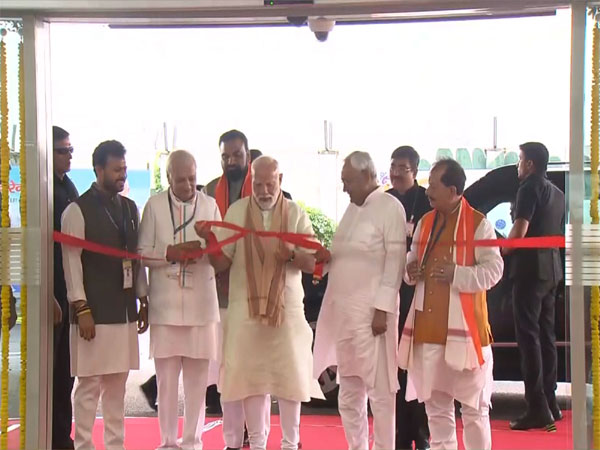Daijiworld Media Network - Patna
Patna, Sep 15: Prime Minister Narendra Modi on Monday inaugurated the long-awaited Purnea airport, delivering on a long-standing demand of the Seemanchal and Kosi regions. The milestone event marked Purnea’s formal entry into India’s aviation map, with the PM also flagging off IndiGo’s first commercial flight from the new airport.
Built at an estimated cost of Rs 40,000 crore, the airport is poised to drastically improve air connectivity in eastern Bihar, with future plans to link the district to major cities like Delhi, Mumbai, Hyderabad, and Bengaluru, in addition to already announced flights to Ahmedabad and Kolkata.

The Prime Minister, accompanied by Civil Aviation Minister N. Ram Mohan Naidu, Bihar CM Nitish Kumar, and Deputy CMs Samrat Choudhary and Vijay Kumar Sinha, was greeted with traditional performances and a grand welcome. He was felicitated with a garland made of makhana, highlighting the region’s cultural identity.
In a packed itinerary, PM Modi also inaugurated the Araria–Galgalia–Thakurganj rail line worth Rs 4,410 crore, and flagged off three new train services — the Jogbani–Danapur Vande Bharat Express, Jogbani–Erode Amrit Bharat Express, and Saharsa–Amritsar Amrit Bharat Express.
He also laid the foundation for several key projects:
• Vikramshila–Katariya rail line (Rs 2,170 crore)
• 2400 MW thermal power plant in Bhagalpur’s Pirpaiti block (Rs 25,000 crore)
• Kosi–Mechi Interstate River Link Project (Phase 1) (Rs 2,680 crore)
• Namami Gange and drinking water projects for Bhagalpur, Darbhanga, and Katihar
As part of social development efforts, the Prime Minister handed over home keys under PM Awas Yojana to 40,920 families, built at a cost of Rs 603 crore, and launched a Rs 500 crore community investment fund.
Highlighting Bihar’s agricultural legacy, PM Modi also launched the National Makhana Board and inaugurated a Semen Bank facility in Purnea, developed at Rs 64 crore, to support livestock and dairy farmers.
The day marked a sweeping push toward regional connectivity, infrastructure, and rural empowerment, reinforcing the government’s focus on development in under-served regions.